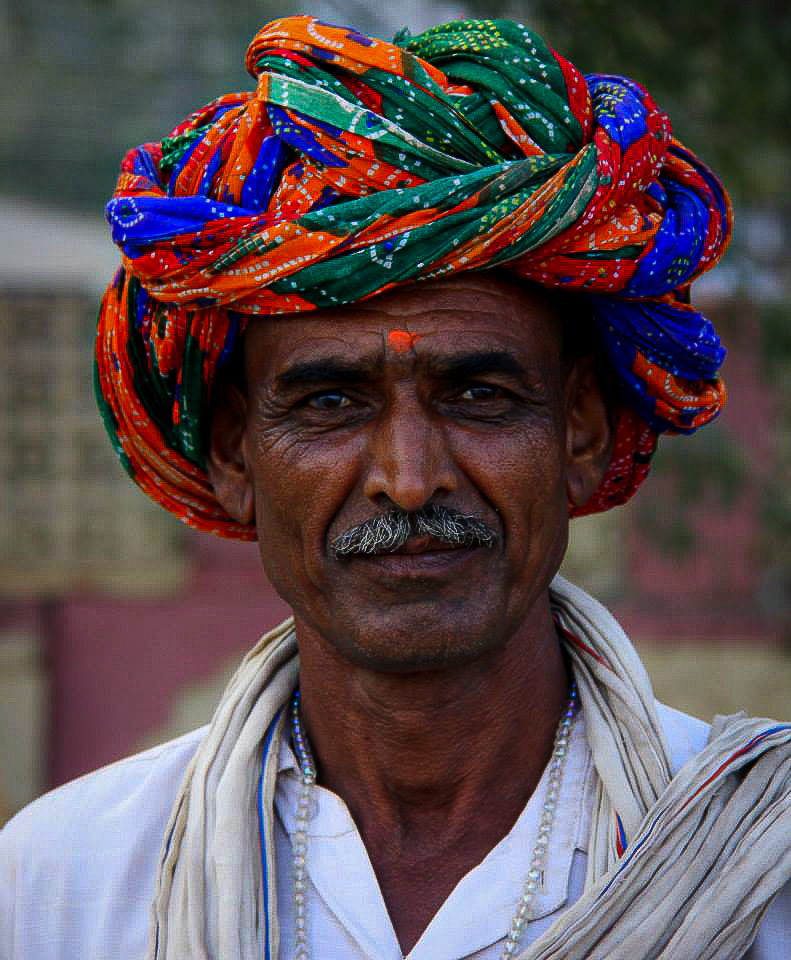When I was a little girl, my grandmother would tell me stories from the Ramayana. My favourite was the one of the Bhil woman who sampled berries before offering them to Lord Rama. When reproached by the spitfire Laxmana about her behaviour, she simply replied that she wanted to give the sweetest berries to her lord. The simplicity of the tale always charmed me and personally, I was glad that someone told off the unpleasant and seemingly useless character of Laxmana. Now I understand that this epic tale vouches for the long heritage of the Bhil tribe and they are one of the oldest indigenous communities of India.
 The brave warriors of Ramayana and Mahabharata
The brave warriors of Ramayana and Mahabharata
The Bhil are the largest tribe of India and they live in the western part of the country, namely in Rajasthan. They constitute about 39 percent of the total Rajasthan population and their Bhili is an Indo-Aryan language. The name ‘Bhil’ is derived from the word ‘vil’ meaning bow and the Bhil people were famous as master archers. Throughout modern history, they showed allegiance to the Rajputs and fought bravely against the Marathas, Mughals, and the British. The famous Mahabharata archer, Ekalavya was also a Bhil.
 The Bhil way of life
The Bhil way of life
Nowadays, the archery of the Bhils no longer takes precedence and this community focuses on their traditional arts instead. The Bhil women dance the famous Ghoomar while their men perform the religious dance-drama Gair on special occasions. The Bhils have a rich cultural history. Their traditional dances and songs are important to them. The women perform Ghoomar on specific occasions and a dance form named Gair which is a religious dance drama is performed by the men of the community. Religious practices differ among the Bhils from various regions although most of them worship local deities like Khandoba, Kanhoba, Bahiroba, and Sitalmata. Their deities do not have any dedicated temples and they consult Badvas – traditional village sorcerers on all occasions. They have a very structured social hierarchy with the prominent Bhagat or Gurus performing the religious rites. Disputes among the tribe members are settled by the village headsmen and the Bhils usually marry within their community.
Mandno, the Bhil wall art
The Bhils are talented in clay modeling and they fashion beautiful horses, elephants, and tigers, deities from the wet earth. Another unique aspect of the Bhil culture, especially of the Udaipur Bhils, is the habit of decorating the walls of their houses with images of the gods, flowers, animals, and birds. Formally known as mandno wall paintings, the Bhil decorate their houses with these stylized line drawings. In 1984, the work of Bhil artists like Goma Pargi and Phula Pargi were discovered by the cultural officers of Tribal Research Institute of Udaipur and they encouraged them to start working on paper and canvas. Thanks to their initiative, this dying Bhil art was revived and nowadays is making waves in the folk art world.
Can this ancient community survive?
Nowadays, these famous archers are mostly agriculturalists. They grow cotton, wheat, black gram, and legumes. These are hard-working folks with both men and women toiling in the fields. Although most of their young generations are more focused on modernization some of them are striving to keep their culture alive. Let’s just hope that this timeless community manages to do so because, in my eyes, the Bhil people are one of the few remaining links with our own mythological heritage.








Follow the rest of the Rajasthan series
- SHEKHAWATI TEASER
- THE PAINTED HAVELIS OF MANDAWA
- SONE CHANDI KI DUKAN IN MAHANSAR
- THE FATEHPUR PAINTED MANSIONS
- THE CROWN JEWEL OF NAWALGARH
- HOW TO VISIT THE PAINTED HAVELIS OF SHEKHAWATI
- BEAUTIFUL DETAILS OF RANAKPUR JAIN TEMPLE
- BUNDI, AN OFFBEAT GEM IN RAJASTHAN
- THE MEDIEVAL CHARM OF BUNDI TOWN
- TARAGARH FORT IN BUNDI
- GARH PALACE OF BUNDI
- BUNDI PAINTINGS
- PHOTO ESSAY OF BUNDI FRESCOES
- BUNDI STEPWELLS
- BHILWARA WILDERNESS
- THE SNAKE CHARMING KAL BELIYAS
RESPONSIBLE TRAVELING-BECAUSE I CARE

